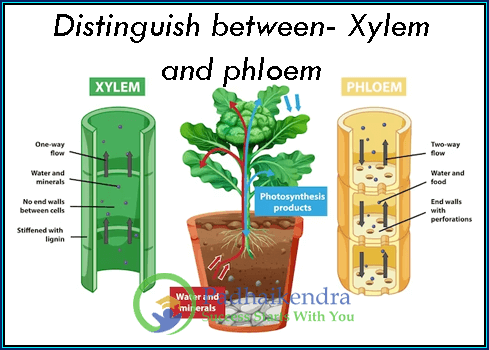Xylem and phloem are both transport tissues found in plants, but they have distinct differences:
- Function: The xylem primarily transports water and dissolved minerals from roots to the rest of the plant, while the phloem primarily transports sugars and other organic compounds produced by photosynthesis in leaves to the rest of the plant.
- Structure: Xylem consists of tracheids and vessel elements, which are long, hollow, tube-like structures with thick walls and dead cells. Phloem consists of sieve tube elements and companion cells, which are long, narrow, tube-like structures with thin walls and living cells.
- The direction of flow: Xylem transports water and minerals upwards from roots to leaves, while the phloem transports organic compounds both upwards and downwards to different parts of the plant.
- Location: The xylem is typically located closer to the center of the stem or root, while the phloem is located closer to the outer part of the stem or root.
Overall, the xylem and phloem work together to ensure that plants are able to transport the necessary materials to grow and survive.





